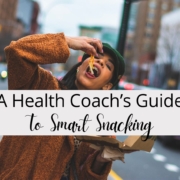Not A Scary Situation, Or Is It?
Here in the US, we may have an assortment of witches, ghosts, and princesses showing up at our doors this evening. Many of them will have cute kids’ faces beaming over the neckline of their costumes, though some may be hidden behind masks. It’s not a scary situation, or is it?
You know what’s really scary in this situation played out in neighborhoods or businesses? The amount of sugar that accumulates in the bags of the trick-or-treaters.
It can seem innocuous. Lots of little candies – suckers, fun-sized packs, or candy bars. All small portions, right?
Surprising Details
Did you know that the average fun-sized candy bar contains a tablespoon of sugar? A cup of granulated sugar contains 48 teaspoons of sugar, and it only takes about 16 of those fun-sized goodies to equal that full cup of sugar.
Most haven’t done the math – in fact, I had not until I was thinking about this blog post.
Surely your kids don’t pop 16 of those fun-sized candy bars in their mouths in one sitting? You might be surprised.
And let’s face it, adults are not immune from sugar overload. Several surveys have asked adults whether they swiped candy from their kids and 78% said they did. I must admit, I’ve been guilty of this. Another 69% of survey responders said that they buy more candy than they buy more than they plan to hand out.
Have you ever considered what you could do to make October 31st and the days following to be healthier for kids and adults? Here are some tips.
Reduce Downstream Sugar
Consider handing out different treats this year. If you are one of those last-minute candy shoppers, take a different approach.
Edible options: hand out clementines or mini oranges, small bags of popcorn or pretzels, or a bottle of water. Your trick-or-treaters may be thirsty with all the walking.
Non-edible options: pencils, glow sticks, temporary tattoos, or bubbles.
Set Expectations With Your Kids
Consider having a conversation with your kids before they go out trick-or-treating that sets expectations on how much candy they can eat that night. Perhaps you agree on an amount that they can set aside to eat over the next week, and the rest can be donated.
Given the amount of sugar noted above in just one fun-sized candy bar, I would suggest you consider 2 pieces on Halloween and 2-3 pieces each week until Thanksgiving. Yes, I know I’m not going to be popular with them.
Do you really want them hyped up on sugar? It makes it hard for them to sleep and suppresses their immune system. Remember, this is also the time of year when sickness travels around in classrooms.
There are many dentists who will trade toys or gift cards for candy (search “Halloween Candy Buyback”). If you are in the Slidell area, bag up the excess candy and drop it into the Slidell Ladies for Liberty donation boxes around town. They use candy as filler for the care packages they pack and ship monthly to deployed soldiers.
Don’t Use As Reward
I encourage you not to use candy as a reward or withhold it as a punishment. This sets a poor connotation that can influence habits into adulthood. Ask me how I know.
Giving sweets as a reward teaches kids that sweets are “good” and encourages them to reward themselves as they get older. That works against them as children and as adults.
Ban The Candy Dish
Don’t put candy where it is easily accessible and always visible. Once someone has the taste for sweets, it is very difficult to resist the temptation. Out of sight is out of mind, and far less likely to be quietly calling out “eat me!”
Sugar is addictive. Eating it sets up our children (or ourselves) for challenges in the weeks, months, and years to come. I work with clients who struggle with the results of eating the wrong edible substances that some would call food.
Their immune systems are suppressed. Their bodies struggle to balance their blood sugar even when they aren’t eating candy currently.
You may consider it too late to completely change the way you approach this holiday. However, you could choose to make one of the changes I have suggested. Do it as a family, even if you find it a challenge.
By demonstrating small lifestyle changes like these, you will show yourself and everyone in your household how to take an important step to pursue improved health.






